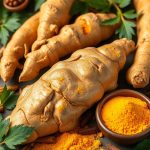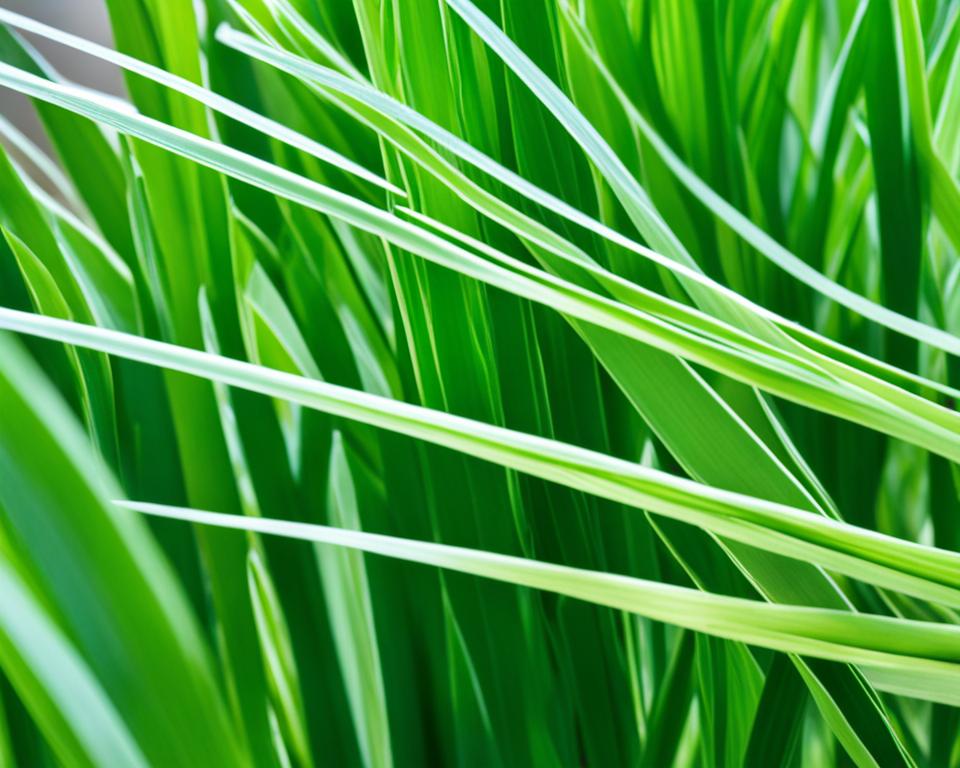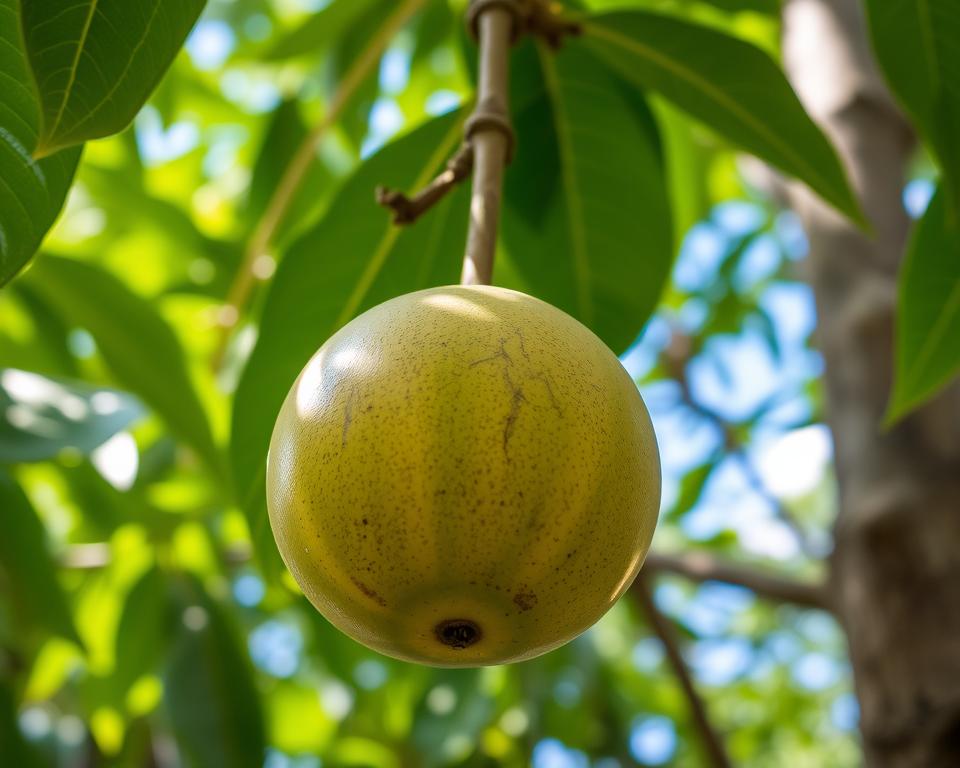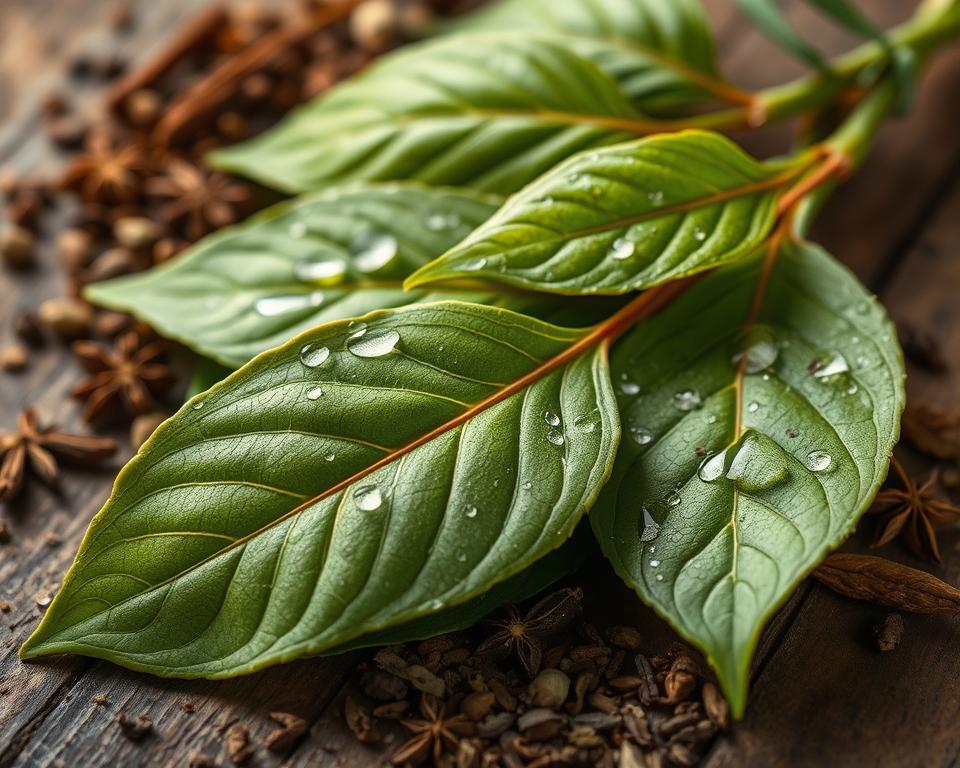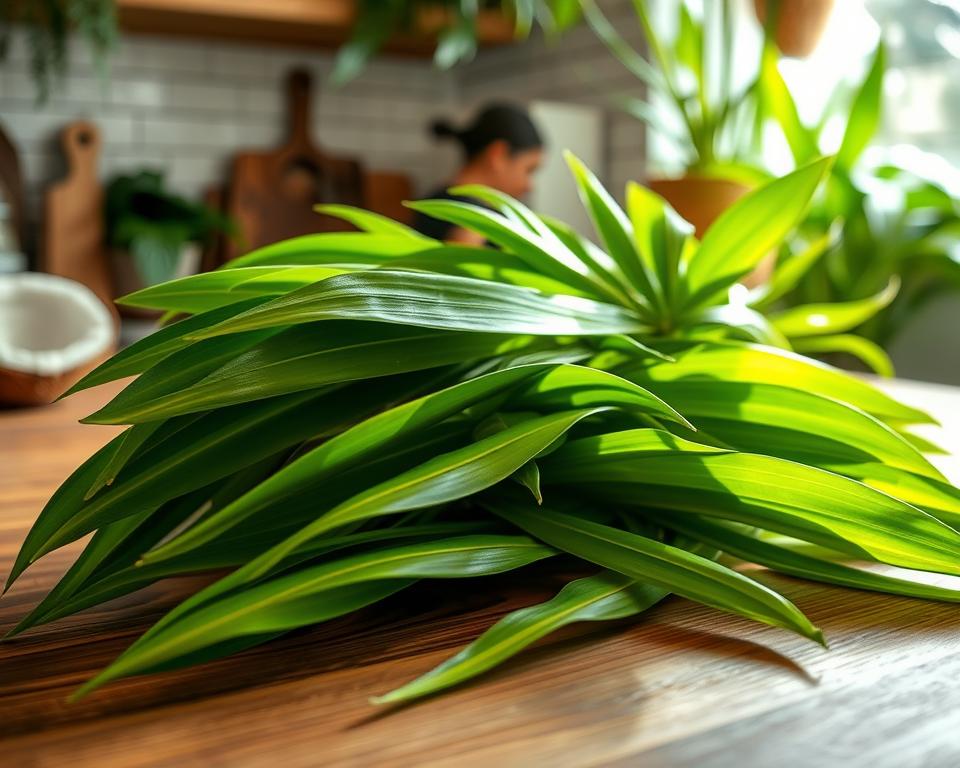Lemongrass is a unique herb with a citrusy smell and taste. It’s a key ingredient in many Asian dishes, especially in Thai and Vietnamese food. This plant, known as Cymbopogon, is loved for its flavor and health perks. It’s also a natural bug repellent.
Read interesting things at : tosawakan
Key Takeaways
- Lemongrass is a fragrant and versatile herb with origins in Asia, known for its distinctive lemon-like flavor and aroma.
- It is widely used in Thai and Vietnamese cuisines, adding depth and complexity to dishes like Tom Yum and curry pastes.
- Lemongrass possesses anti-inflammatory and antioxidant properties, making it a potential natural health supplement.
- The herb can also be used as a natural insect repellent, thanks to its citronella content.
- Lemongrass can be easily grown at home, providing a convenient source of this flavorful and aromatic herb.
Introduction to Lemongrass
Lemongrass, known as Cymbopogon, is a vibrant herb loved by cooks around the world. It’s a tropical plant from Southeast Asia, known for its lemony flavor and smell.
Origins and Botanical Profile
Lemongrass, or Cymbopogon, is a tall, perennial grass. It’s related to herbs like galangal. Its long leaves and stems are key to its flavor and health benefits.
Aromatic Properties and Distinctive Flavors
- Lemongrass is known for its strong citrus smell and taste, thanks to its essential oils.
- These oils, full of citral and limonene, give lemongrass a unique flavor. It tastes like a mix of lemon, ginger, and a bit of mint.
- The smell and taste of lemongrass can change a bit, but it always adds a fresh, aromatic touch to dishes.
Lemongrass is a key ingredient in Southeast Asian cooking, like in Thai, Vietnamese, and Indonesian food. It’s loved for its unique taste and versatility, making it a favorite among chefs and home cooks.
Culinary Applications of Lemongrass
Lemongrass is a versatile herb used in many dishes for its unique citrus flavor. It’s a staple in Asian cooking, especially in Thai and Vietnamese recipes. It’s added to soups, curries, marinades, and stir-fries to give them a special taste.
Lemongrass is a key ingredient in Thai dishes. It’s a main part of the Tom Yum soup, adding a zesty lemon flavor. It’s also used in Thai curry pastes, blending with spices and herbs to create rich flavors.
But lemongrass isn’t just for Thai food. It’s used in other Asian dishes too. In Vietnamese cooking, it adds a subtle citrus taste to curries and stir-fries. It’s also used in marinades and dressings to tenderize meats and add a fresh, fragrant flavor.
“Lemongrass is a versatile herb that can transform a dish from ordinary to extraordinary with its unique, aromatic flavor.”
Whether you’re making a Thai soup, marinating meat, or adding Asian flavor to your dishes, lemongrass is essential. Its ability to add a captivating citrus taste makes it a favorite in kitchens everywhere.
Thai Cuisine: A Starring Role for Lemongrass
In the vibrant world of Thai cuisine, lemongrass is a key player. It’s a must-have in many famous Thai dishes. Its unique citrus flavor and aroma make dishes that delight the senses.
Essential Ingredient in Tom Yum and Curry Pastes
Lemongrass is a star in the famous Tom Yum soup. This soup is tangy and spicy, thanks to lemongrass. It balances the sour, sweet, and spicy flavors perfectly.
In Thai curry pastes, lemongrass is also a key ingredient. It’s found in rich massaman, fiery red, and green curries. Lemongrass adds a citrusy taste and subtle complexity to these dishes.
“Lemongrass is the heart and soul of Thai cuisine, infusing its unique flavor into the country’s most iconic dishes.”
Lemongrass is used in soups, curry pastes, and stir-fries. It’s a flavor powerhouse that makes Thai dishes incredibly tasty.
Lemongrass in Asian Cooking
Lemongrass is not just a star in Thai cooking. It’s loved across many Asian foods. It’s often found in curries and stir-fries, adding a unique citrus flavor and smell.
Infusing Flavors in Curries and Stir-Fries
Asian curries and stir-fries get a boost from lemongrass. You can use it whole, bruised, or chopped. This lets its scent mix well with spices and other ingredients. It makes these Asian dishes taste even better.
- Lemongrass adds a bright, citrusy taste to curries in Malaysia and Indonesia.
- In Chinese stir-fries, chopped lemongrass brings a unique flavor to the sauce, matching well with other ingredients.
- Vietnamese cooking often uses lemongrass in its broths and marinades, adding its special aroma.
Lemongrass fits into many Asian dishes, making them taste better. It’s a key ingredient in many recipes.
“Lemongrass is like the workhorse of Asian cuisine – it’s used in so many different dishes, from curries to stir-fries, and it just adds this lovely, citrusy depth of flavor that you can’t replicate with anything else.”
Lemon Grass: A Global Culinary Sensation
Lemongrass is a staple in Asian cooking but has become popular worldwide. It’s used in many dishes, adding a unique flavor. You can find it in curries, soups, marinades, and dressings.
Lemongrass brings a fresh, citrusy taste to dishes. It’s key in making Thai tom yum and Indian curries. This makes it a must-have in many traditional recipes, enhancing flavors.
Lemongrass is also versatile in cooking. It’s used in oils, vinegars, baked goods, and desserts. Plus, it’s known for its health benefits, making it popular in wellness recipes.
| Cuisine | Lemongrass Dishes |
|---|---|
| Thai | Tom Yum, Green Curry, Lemongrass Chicken |
| Vietnamese | Pho, Lemongrass Beef, Lemongrass Shrimp |
| Indian | Coconut Lemongrass Curry, Lemongrass Chutney |
| Mexican | Lemongrass Salsa, Lemongrass Marinated Seafood |
The world loves diverse global cuisine more than ever. Lemongrass connects different cooking traditions. It brings a taste of the exotic to food lovers everywhere, from Asia to the Americas.
Health Benefits of Lemongrass
Lemongrass is a vibrant and aromatic herb that’s getting a lot of attention for its health benefits. Studies show it has anti-inflammatory and antioxidant properties. These could help improve overall health.
Anti-Inflammatory Properties
Lemongrass is full of compounds like citral, limonene, and geraniol. These have anti-inflammatory effects. They might help reduce inflammation and ease pain, making lemongrass good for arthritis, muscle soreness, and skin issues.
Antioxidant Powerhouse
Lemongrass is also a strong antioxidant. It has phytochemicals that fight off harmful free radicals and boost the body’s defense. Adding lemongrass to your diet could help keep cells healthy and lower the risk of chronic diseases.
| Compound | Potential Health Benefit |
|---|---|
| Citral | Anti-inflammatory, antioxidant, and antimicrobial properties |
| Limonene | Anti-inflammatory, antioxidant, and potential anti-cancer effects |
| Geraniol | Anti-inflammatory, antioxidant, and potential neuroprotective effects |
Using lemongrass can bring many health benefits. It’s a great way to support your well-being by adding it to your daily routine.
Lemongrass as a Natural Insect Repellent
Lemongrass is more than just a tasty ingredient; it’s a powerful natural bug repellent. Its citronella essential oils are great at keeping mosquitoes and other pests away.
Using lemongrass for bug control is good for the planet. It’s perfect for outdoor activities or just chilling in your backyard. Adding lemongrass to your space keeps bugs away in a natural way.
- The citronella in lemongrass makes it great for keeping bugs away.
- You can use lemongrass in many ways to keep pests out, like:
- Planting it around outdoor seating
- Mixing it into homemade bug sprays
- Burning it or its essential oil as incense
- Research shows lemongrass repellents work as well as DEET-based products but are safer.
With lemon grass and lemongrass, you can have a bug-free, clean space. Plus, you’re supporting green and healthy living.
“Lemongrass is a remarkable herb that offers both culinary delight and natural insect protection. Its versatility makes it an invaluable addition to any home or garden.”
Growing Lemongrass at Home
For those interested in the unique aroma and many uses of lemongrass, growing it at home is a fun project. This herb is easy to grow and can do well in many climates. It’s a great choice for anyone wanting to add something new to their garden.
Cultivation Tips and Care Instructions
Here are some tips and care instructions for growing lemongrass at home:
- Choose a sunny spot with well-draining soil for lemongrass. Make sure it gets at least six hours of sunlight a day.
- Plant lemongrass rhizomes or divisions in spring or early summer. Keep them 18-24 inches apart. The soil should be moist but not too wet.
- Water the plants regularly, but don’t overdo it. Lemongrass likes a humid environment, so misting the plants helps.
- Feed your lemongrass with a balanced, slow-release fertilizer a few times a year. This keeps it healthy and growing strong.
- Harvest the outer leaves or stalks as you need them. Only take one-third of the plant at a time. This way, you get a steady supply of fresh lemongrass and encourage more growth.
Follow these easy tips and take good care of your lemongrass plants. You’ll enjoy the taste and smell of this versatile herb in your cooking.
“Lemongrass is a versatile herb that thrives in home gardens, providing a bountiful harvest of fresh, aromatic leaves for your culinary adventures.”
Lemongrass Tea: A Refreshing and Healthy Beverage
Lemongrass is a vibrant and aromatic herb found in many Asian dishes. It also makes a delightful tea. This tea comes from the fresh or dried leaves and stems of the lemongrass plant. It has a citrusy flavor that’s both refreshing and soothing.
This tea is more than just a tasty drink; it’s also good for you. It’s full of antioxidants and may help reduce inflammation. That’s why many people choose it as a natural way to stay healthy.
To make a comforting cup of lemongrass tea, just steep fresh or dried lemongrass in hot water for a few minutes. Let the flavors mix well. You can drink it alone or add honey, ginger, or a bit of lemon for extra taste.
“Sipping on a cup of lemongrass tea is like taking a refreshing journey to the tropics, right from the comfort of your own home.”
If you’re looking for a tea without caffeine or want a tasty, healthy drink, lemongrass tea is a great pick. It will make your senses happy and keep your body healthy.
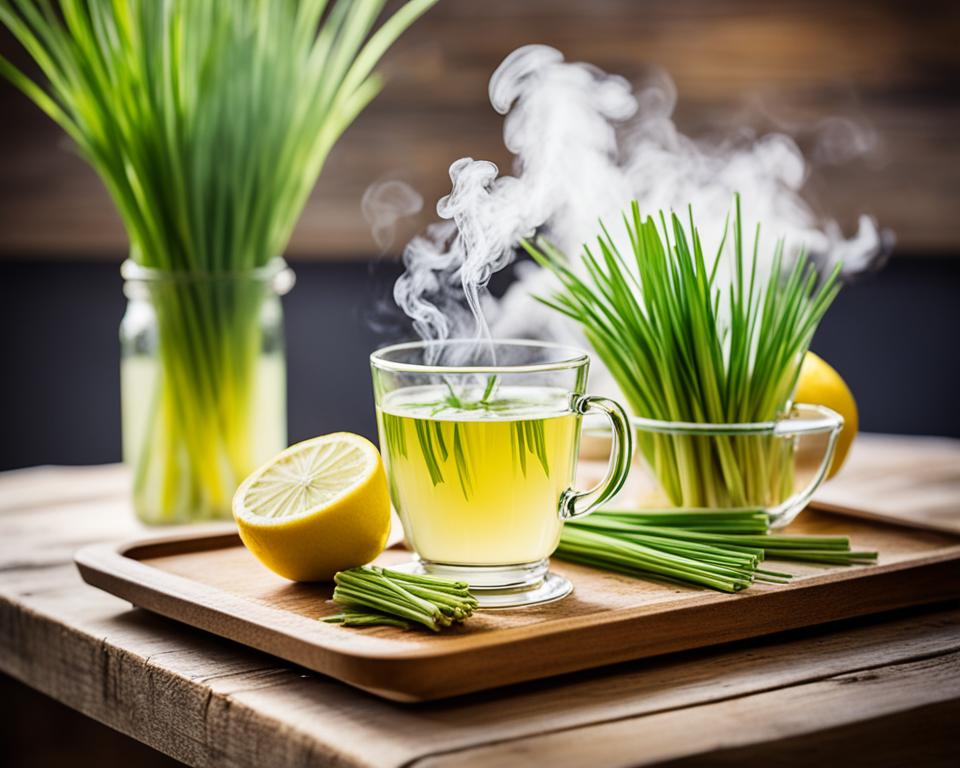
Brewing the Perfect Cup of Lemongrass Tea
- Gather fresh or dried lemongrass stalks and chop them into 1-inch pieces.
- Bring filtered water to a gentle boil in a teapot or saucepan.
- Add the chopped lemongrass to the hot water and let it steep for 5-7 minutes.
- Strain the tea to remove the lemongrass pieces, and pour the fragrant brew into your favorite mug.
- Customize your tea with a touch of honey, a slice of lemon, or a sprinkle of ginger for added flavor and health benefits.
Enjoy the refreshing and soothing qualities of lemongrass tea. Its aroma and flavor are captivating. This tea is a great way to relax and get the natural benefits of this versatile plant.
Pairing Lemongrass with Other Herbs and Spices
Lemongrass is a versatile herb that goes well with many other herbs and spices. It creates complex and harmonious flavors. Its citrusy taste matches the earthy flavors of ginger, galangal, and turmeric. It also balances the heat of chili peppers. Trying out different flavor mixes can make the most of lemongrass in cooking.
Complementary Flavors and Combinations
There are endless ways to pair lemongrass with other herbs and spices. Here are some great flavor mixes to try:
- Lemongrass and ginger – This classic mix is great for curries, stir-fries, and marinades. It’s vibrant and aromatic.
- Lemongrass and galangal – Both are from the ginger family. They add depth and complexity to Thai and Southeast Asian dishes.
- Lemongrass and turmeric – Turmeric’s earthy taste goes well with lemongrass. They’re perfect for curries and rice dishes.
- Lemongrass and chili peppers – Lemongrass can balance the heat of chili peppers. This mix creates a delightful flavor.
By trying these and other flavor mixes, cooks can bring out the best in lemongrass. This leads to memorable dishes.
Lemongrass in Marinades and Dressings
Lemongrass is more than just a main dish star. It’s also great in condiments and other culinary uses. Its unique taste can make marinades tender and flavorful, adding a citrusy touch to meats, seafood, or veggies.
It’s also perfect for salad dressings, vinaigrettes, and sauces. Adding lemongrass can refresh these items. It makes them a great match for many dishes.
| Lemongrass in Marinades | Lemongrass in Dressings |
|---|---|
|
|
Adding lemongrass to marinades, dressings, or condiments can really boost flavors. It adds a fresh twist to your cooking. Try using this aromatic herb in new ways to spice up your dishes.
“Lemongrass is a hidden gem in the world of herbs and spices. Its bright, citrusy notes can transform even the simplest dish into a flavor explosion.”
Lemongrass: A Versatile Herb for Diverse Dishes
Lemongrass is a versatile herb that makes many dishes better, from savory to sweet. It adds a unique flavor to soups, curries, baked goods, and desserts. This herb is a must-have in any kitchen for its endless uses.
In Thai cuisine, lemongrass is a key ingredient in dishes like Tom Yum soup and curry pastes. But it’s not just for Asian dishes. It can also add a refreshing touch to marinades, dressings, and even baked goods like lemon bars or pound cake.
Exploring the diverse culinary uses of lemongrass opens up endless possibilities. Whether you’re making a Thai-inspired stir-fry or trying new baking recipes, lemongrass is a great choice. It will quickly become a favorite in your kitchen.
| Dish | Lemongrass Use |
|---|---|
| Tom Yum Soup | Bruised lemongrass stalks infuse the broth with a fragrant, citrusy flavor. |
| Lemongrass Chicken | Lemongrass is used to marinate the chicken, adding a unique aroma and taste. |
| Lemongrass Tea | Dried lemongrass leaves are steeped in hot water to create a refreshing, aromatic tea. |
| Lemongrass Pound Cake | Lemongrass is incorporated directly into the cake batter, lending a subtle citrus undertone. |
Lemongrass adds a touch of exotic flair to savory dishes and a delicate citrus note to baked goods. It’s a versatile herb that every diverse culinary toolkit should have.

“Lemongrass is the secret ingredient that can transform a dish from ordinary to extraordinary.”
Conclusion
Lemongrass is a captivating herb that has won over food lovers and health enthusiasts. Its unique citrus scent and taste are key in many Asian dishes, from Tom Yum soups to curry pastes. It’s also known for its health benefits and natural bug repellent qualities.
This herb is a dream for cooks at home and in restaurants. It adds flavor to curries and stir-fries, and even makes a refreshing tea. Lemongrass works well with many herbs and spices, making it essential in today’s kitchens.
From its tropical roots to being a global favorite, lemongrass has amazed us with its versatility. Its charm keeps growing, encouraging us to find new ways to use it in cooking and wellness.





